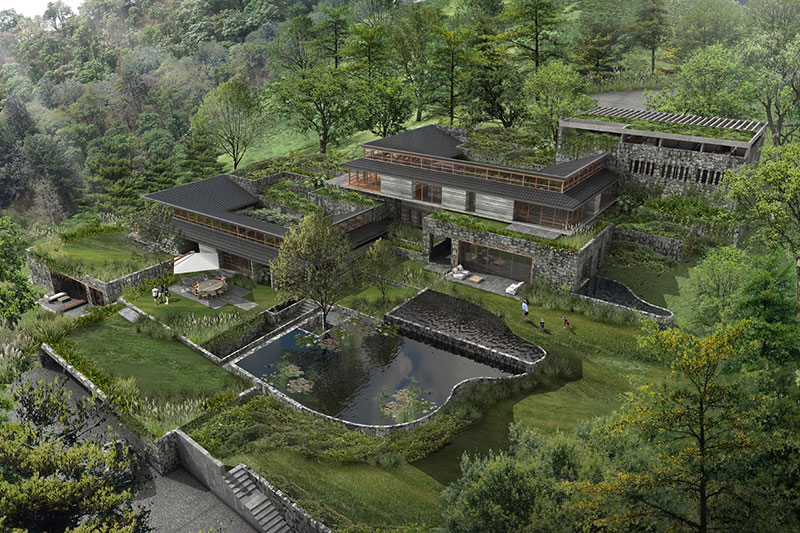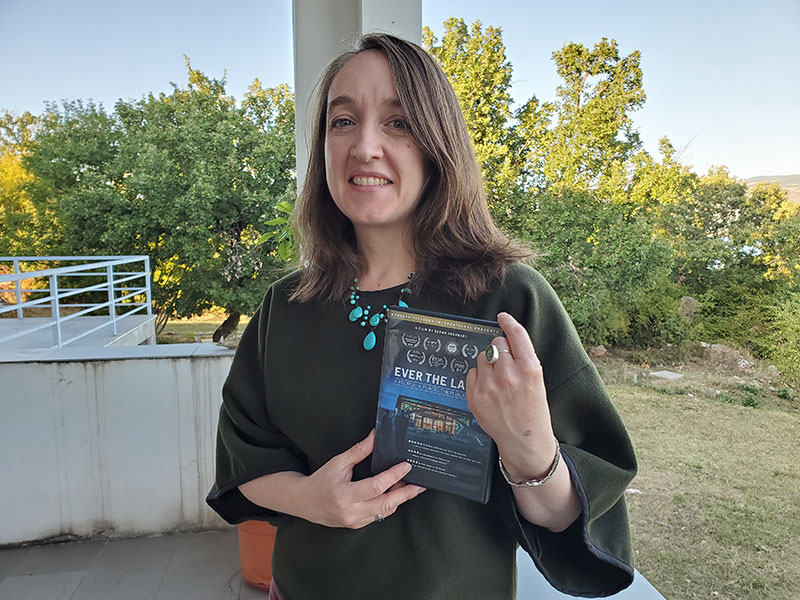In This Issue
By Amy Nelson
Imagine creating a beautiful building that functions as efficiently and elegantly as a flower. It generates its own energy. It wastes nothing. It captures all of its own water and after using it, cleans it before returning it to the earth. And all the while, it remains firmly rooted in place. Imagine designing a workplace or home that enhances the well-being of its occupants and the broader community of life. Imagine bringing to life a building that, like a seed and pollen bearing flower, facilitates the propagation of others like it. Imagine a building that draws people in while connecting them to the natural world outside. If this sounds like the ultimate sustainability challenge for the built environment, that’s because it is.
Launched in 2006, the Living Building Challenge (LBC) is the most rigorous, proven, green building certification standard in the world. Formed around seven performance area “Petals” (Place, Water, Energy, Health & Happiness, Materials, Equity, and Beauty), each with a stringent set of Imperatives, it is a paradigm-shifting framework. Not only for design and construction, but for hope. With imperatives related to habitat protection, ecological function, water quality, biophilia, resilience, and environmental justice, the Living Building Challenge aligns well with the values and work involved in conservation, ecological restoration, and regenerative design. To date, 116 projects have achieved some form of LBC certification, and the community of people bold enough to take on the Challenge is growing. As you read this, 439 additional projects are in pursuit of LBC certification.

What does the Living Building Challenge entail and how does certification work? What does it feel like to be in a Living Building? What can ecologists, biologists, water resources and ecological engineers and landscape architects bring to LBC design teams?
Join us as we find out. We begin with a brief overview of the Living Building Challenge and the intent of each of its components. Then, we chat with the experts. First, we hear from its creator: architect, author, and green building visionary Jason McLennan. Kathleen Smith, Vice President of the Living Building Challenge, provides more insight into the LBC, including the thinking behind its new Ecology of Place and Inclusion Imperatives. Several Living Building owners and directors tell what it is like to create, operate, inhabit, and work in some of the world’s most exciting and precedent-setting buildings. Crystal Grinnell and Ryan Masé offer Drops of Wisdom about glory and the gritty realities of achieving the LBC’s Water Petal.

The LBC is administered by the International Living Future Institute (ILFI), the subject of our Non-Profit Spotlight. Founded a decade ago, the ILFI has continued to advance its vision of an ecologically restorative, socially just, culturally rich world through the creation of additional tools, advocacy, and professional development programs. One such tool is the Living Community Challenge (LCC), a certification program which extends the philosophy and reach of the LBC to the scale of an entire community, city, or region. David Yocca, who has collaborated on Living Community Challenges, tells us about this new model for restorative neighborhoods, campuses, and districts and shares three compelling case studies.

In the Inspiration Station, Jennifer Dowdell reviews Ever the Land, a film by Sarah Grohnert which documents the creation of te wharehou, New Zealand’s first Living Building and the tribal headquarters of the indigenous Ngāi Tūhoe people of the Maori. We also feature LBC-inspired poetry by Tanaira Cullens.

If you’re wondering how the LBC stacks up against other sustainability standards, Katherine Bartter has condensed seven of the leading green building certification systems into a basic reference guide you might find helpful. For more about the Living Building Challenge we encourage you to visit the ILFI website and explore our list of Resources. We also share updates on some of the Living Building Challenge projects Biohabitats currently has underway, along with other news about Biohabitats Projects, Places, and People.
On a recent radio interview, Biohabitats Practice Lead Erin English described green infrastructure as “a practice of hope.” We see the Living Building Challenge as another practice of hope, one that not only yields inspiring, resilient, spaces that improve conditions for all life, but also reconnects us to the natural systems that sustain it.
I hope you enjoy this issue, and I’m kinda curious to know what you think about it. To share your thoughts, or offer suggestions for future issues of Leaf Litter, just send me an email!

